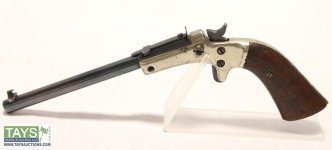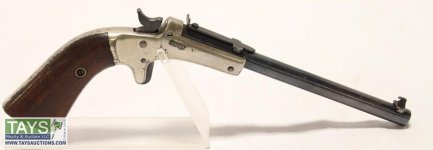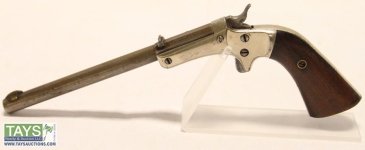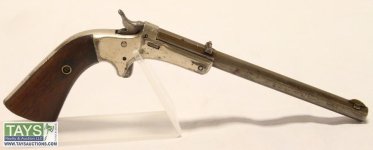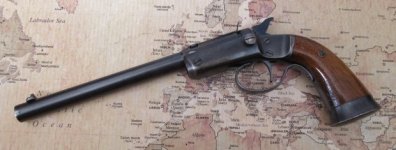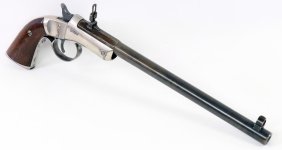...Skeeter Skelton's favorite firearm when he was a kid...
...here's a little short article he wrote...
At the tail-end of the Depression, in the late 30’s, the Texas Panhandle was my home. Chamber of Commerce people call it the Golden Spread now, but in those days it was the Dust Bowl. Drought combined with bad markets to make life intolerable for ranch people whose livelihood depended on grass for their cattle, and rain for their wheat and stock feed.
For some bitter reason, Providence chose this time to explode the rabbit population. Despite the lack of forage, the jacks multiplied into legions that threatened to strip the Panhandle of the last nibble of greenery. Drives were organized, with safari-type beaters running thousands of the dirt colored hares into wire pens, where they were dispatched with clubs. This made for much newspaper publicity, but the drives were hard to put together and too much work to attract regular participants.
To me, Phase II of the Rabbit War appealed much more, and made me a pistol shot. After much deliberation, tight-fisted county commissioners put a two-cent bounty on jackrabbits’ scalps, and it became economically feasible to shoot as much as I liked.
My only gun at that time was a long-barreled Stevens single shot pistol, chambered for the .22 Long Rifle cartridge. It would be illegal, these days, with its detachable, skeletonized shoulder stock, and maybe it was then. As a practical matter, I never used the stock, but simply shoved the Stevens into my belt, dropping a box of .22 Long Rifle hollowpoints in an overall pocket.
Twenty-two shorts cost a dime a box in those hungry days, but I was extravagant enough to prefer the high speed long rifle ammo. Even though the old single shot was worn and loose, it would bring down a buck jack at 20 yards with no sweat, as long as the right ammunition was used. Shorts couldn’t be depended on, and I soon learned the fiscal aspects of rabbit gathering.
Fifty jacks under the 2-cent bounty system grossed one dollar. On dollar would buy about four boxes or 200 rounds, of long rifle hollowpoints. This allowed me a generous quota of misses, along with a few shells left over for bullfrogs, doves, ducks, and other table delicacies. All my shooting was at game. No storebought shells were wasted and I never fired at a paper target until I arrived in Marine boot camp some years later.
This parsimonious use of cartridges stood me in good stead, instilling careful shooting habits. I wanted to hit - I had to hit - with my first shot or the target was off on a loping trip to the next county. Shooting two-handed, and using any available rest, I taught myself the basics of sight picture and trigger squeeze. The inherently short range of my old Stevens taught me to stalk, and to let the hammer down on the unfired cartridge if Br’er Rabbit decided to run. Most were taken inside of 20 yards, and I don’t recall ever trying at over 40, even if I felt lucky.

